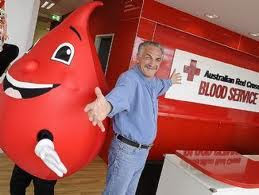 Harry enjoyed dates with the girls while fluttering
his long eyelashes and showing off his prowess at blowing raspberry bubblegum.
Harry enjoyed dates with the girls while fluttering
his long eyelashes and showing off his prowess at blowing raspberry bubblegum.
Then, as a new immigrant arriving at Port
Adelaide on 12 October 1840 from the Canary Islands, he felt rather lonesome,
especially since his siblings had died at sea and he was the first of his family
to reach Australia. Alas, no-one seemed to appreciate the rough habits of this
‘back-packer’ - plodding around in sandshoes while burping, dribbling, and
spitting.
You
don’t think Harry’s ‘doula’ is raspberry bubblegum??....prove me wrong!
Why did outback Australia
in the 1800’s find dromedary camels so useful?
Australians are exploring their vast continent
and desperately need a ‘ship of the desert’ to carry up to 1000 lbs (450 kgs) of
supplies for up to 60 miles (100 kms) each day through searing desert heat with
little or no water, and potentially provide fuel, meat, milk, cheese, shelter,
clothes, blankets, leather…..
 |
| Maree, S.A. 1901 |
With a
protest!
They say a camel is a horse designed by a
committee.
Let’s see if they’re right:
·
this ‘low-loader’ has
integrated knee pads (…mighty hand for mating too!) Let’s see if they’re right:
· a unique backpack holds 80lbs (36kgs) of emergency fat rations
· any sort of vegetation is acceptable. Thorns?...no problem! (by the way, hide your boots)
· double rows of eyelashes, slit shaped nostrils and hairy ears filter out any dust-storm
· inner eyelids……the first windscreen washer/wipers!
· unique oval-shaped red blood cells that enables the camel to easily survive 40% DEHYDRATION (we go blind at 5%, dead at 12%)
· able to cope with a 6 degree C rise in body temperature under the protection of a thick coat of hair (1 degree rise is enough for us)
· a unique rolling gait with splayed feet that spread on desert sand
 |
| Real ATV racing at Alice Springs, NT |
So this highly versatile, water efficient,
‘one-stop-shop’, 4x4 ATV racer incorporates automatic moisture-collecting dust
filters, optical washer/wipers, heavy duty sandshoes, integrated knee pads,
emergency back-pack……..oh, and don’t forget the bubblegum! (Is there a sense of
humour in this?)
What do you think? Was this guy cleverly designed and ‘purpose-built’?
What do you think? Was this guy cleverly designed and ‘purpose-built’?











